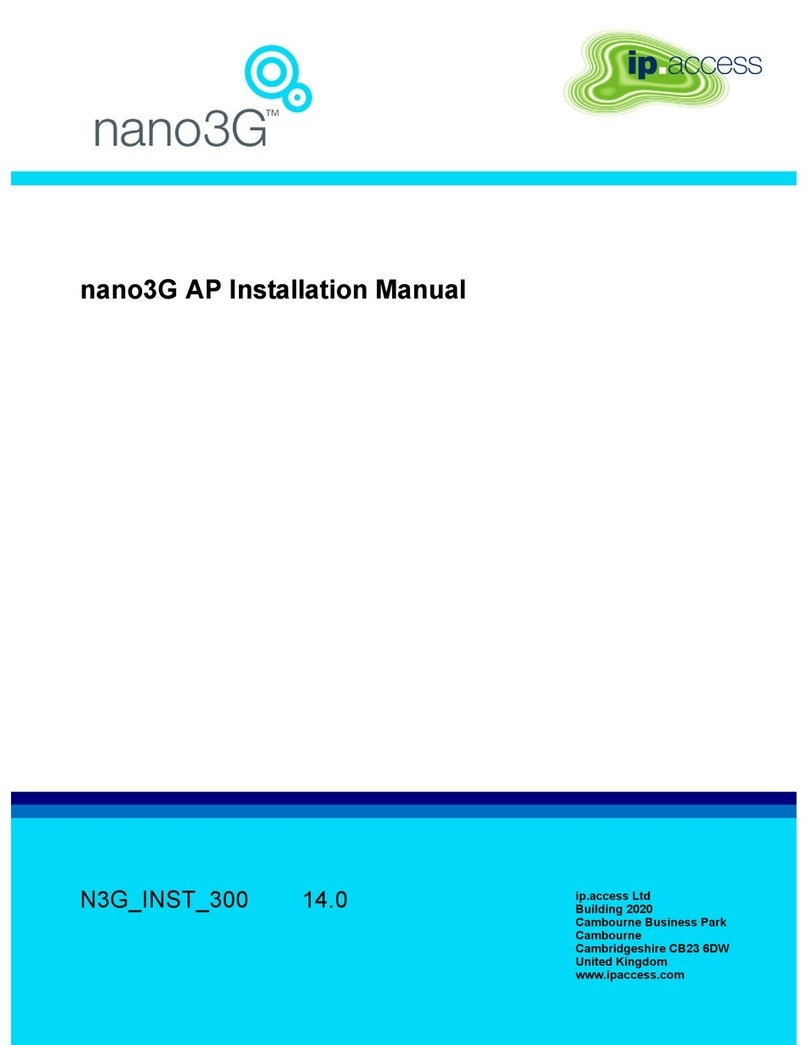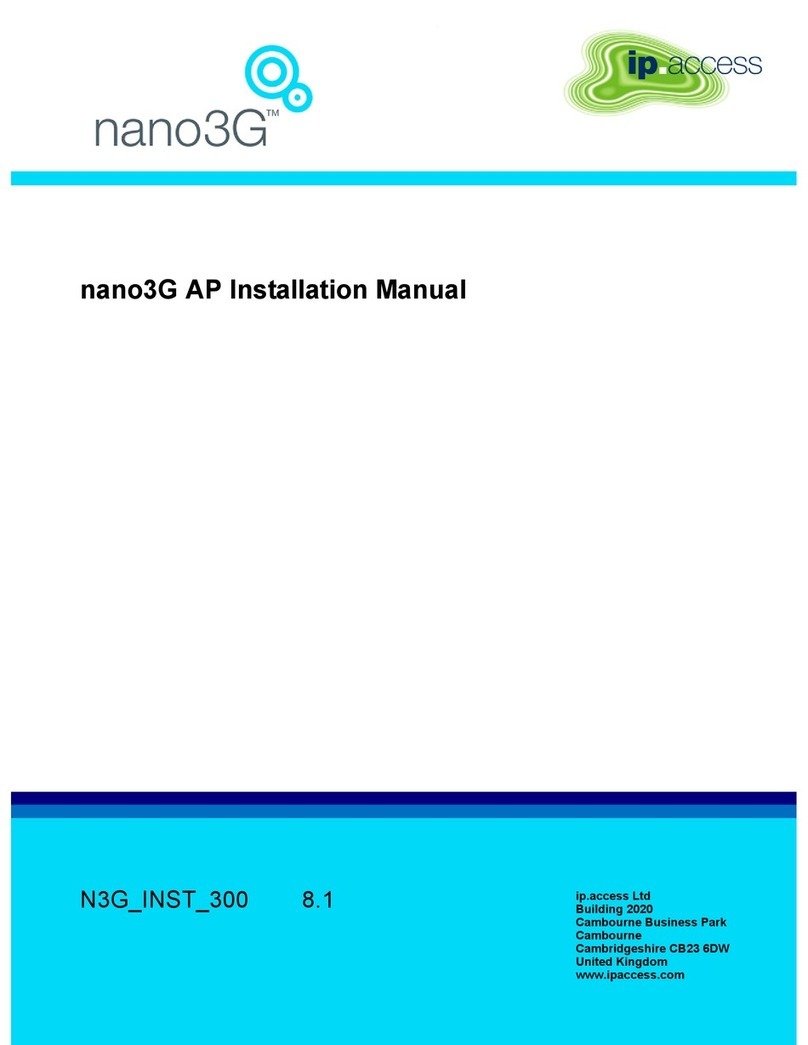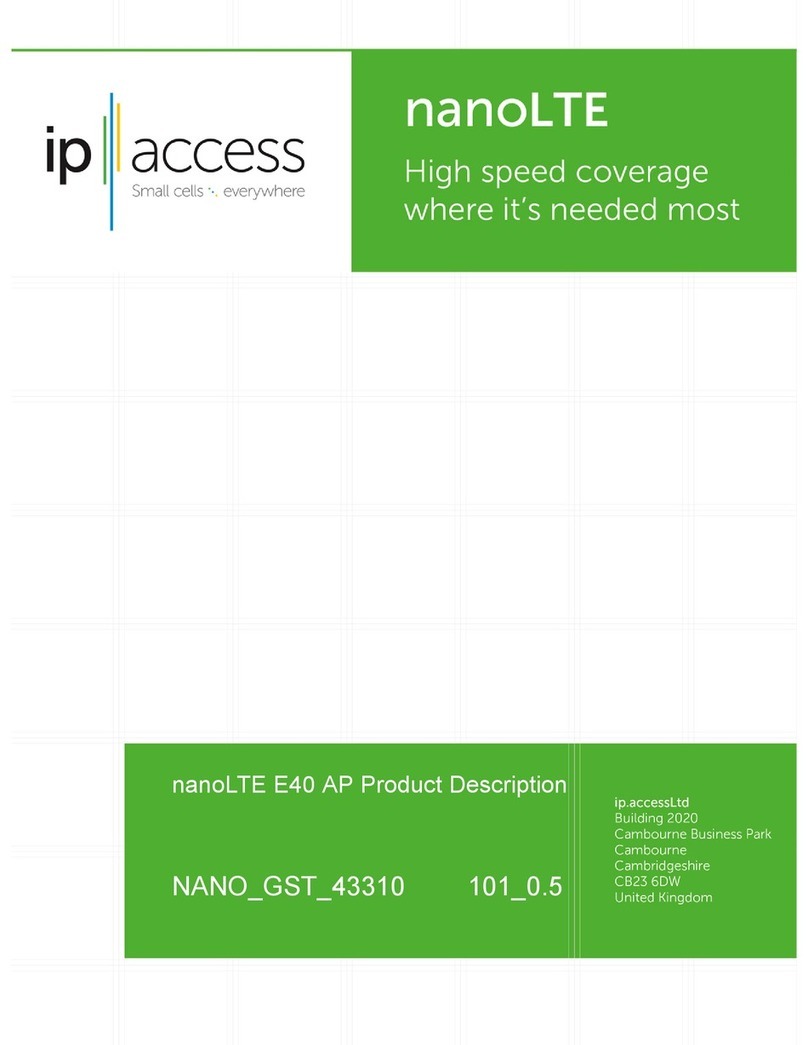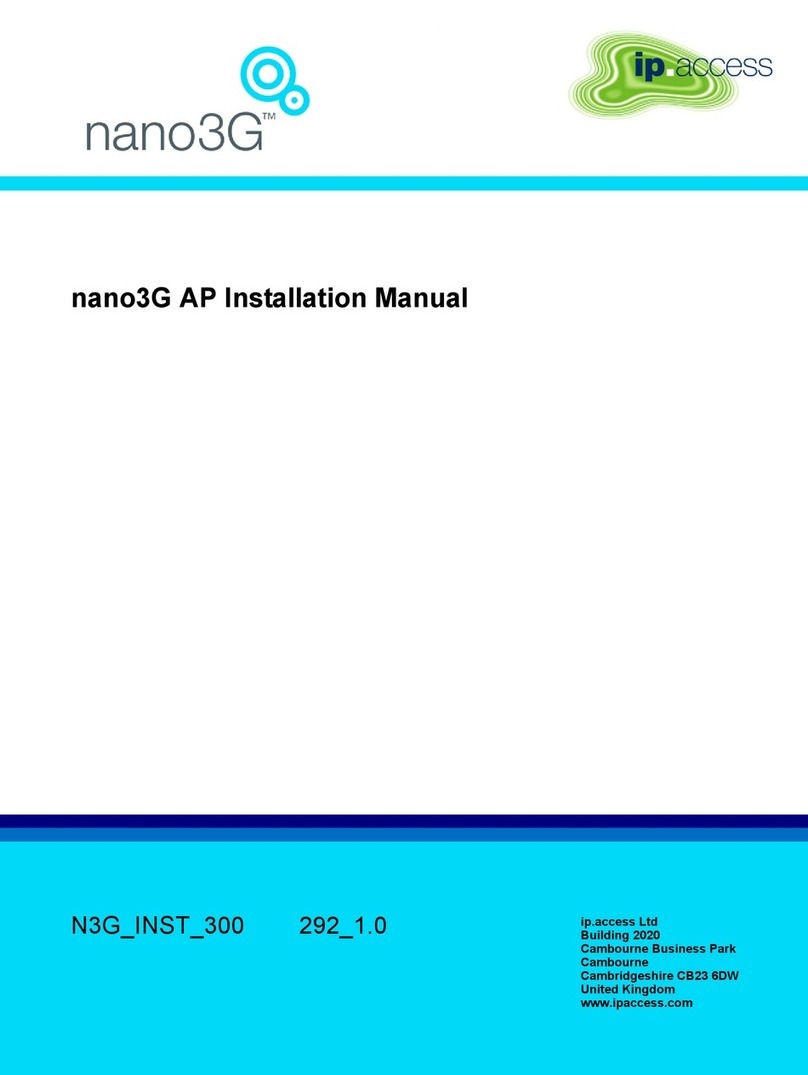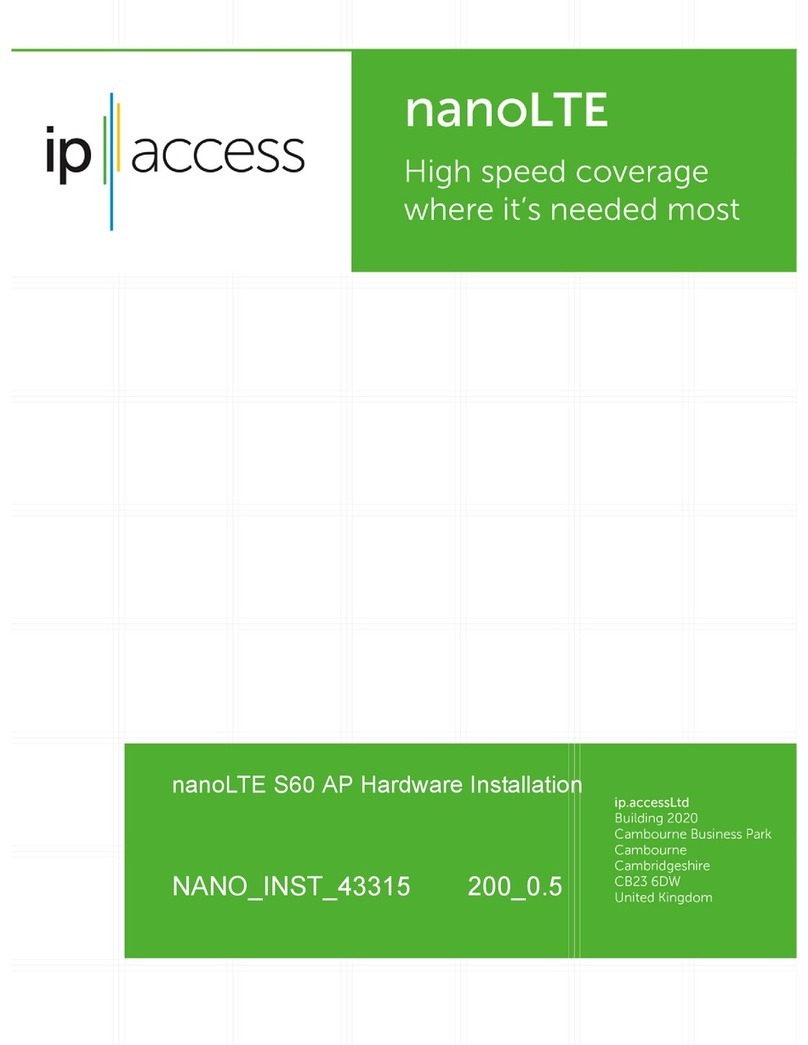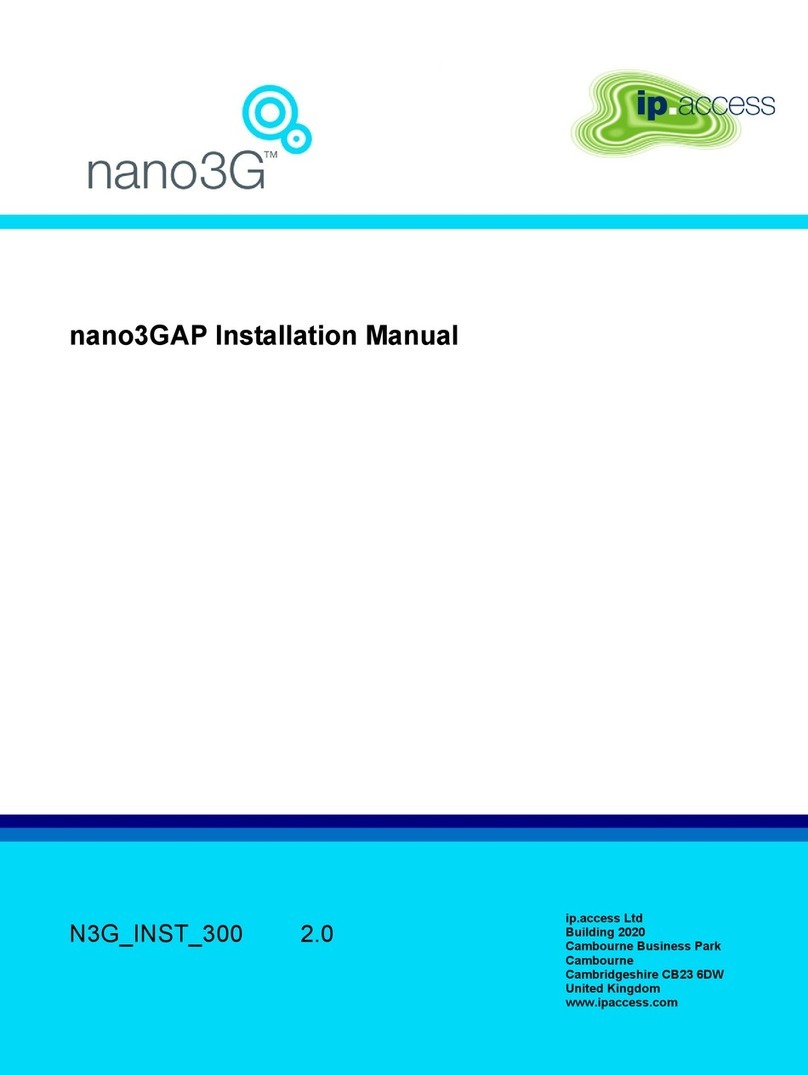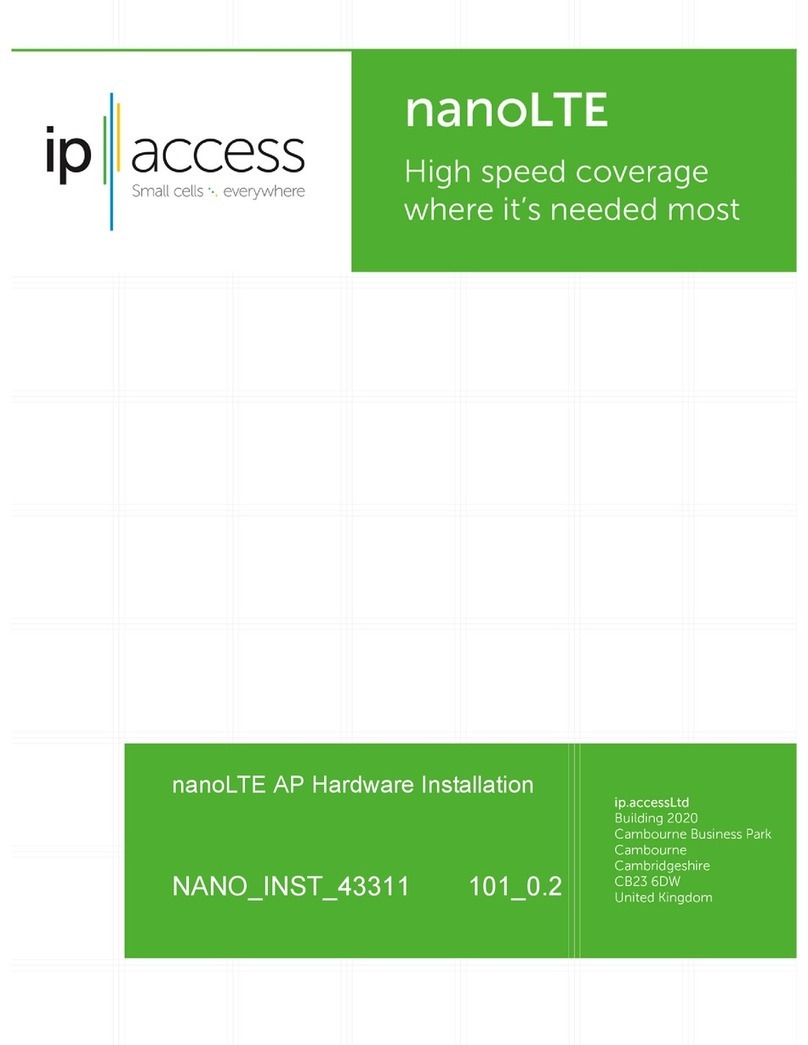
nanoLTE E61 AP Hardware Installation
NANO_INST_43325 v205_0.6 for N4G_2.5 © ip.access Limited 2019 Page i
Table of Contents
1 Introduction............................................................................................ 1
1.1 Overview ............................................................................................................ 1
1.2 Warnings and Regulatory Information ............................................................... 1
1.3 Related Information............................................................................................ 1
1.4 Licenses and Copyright Notices ........................................................................ 1
1.5 Terminology ....................................................................................................... 1
2 Installation Overview and Requirements ............................................ 2
2.1 Installation Tasks ............................................................................................... 2
2.1.1 Pre-Provisioning ................................................................................................... 2
2.1.2 Commissioning..................................................................................................... 2
2.1.3 Site Installation ..................................................................................................... 2
2.2 Mounting Options............................................................................................... 3
2.3 nanoLTE E61 AP Site Requirements................................................................. 3
2.3.1 General Site Installation Requirements................................................................ 3
2.3.2 AP Cooling ........................................................................................................... 4
2.3.3 Port Usage ........................................................................................................... 4
2.3.4 nanoLTE E61 AP Power Requirements ............................................................... 7
2.3.5 E61 AP Physical Requirements ........................................................................... 9
2.3.6 Thermal Protection ............................................................................................. 10
2.3.7 Backhaul (IP) Bandwidth Requirements............................................................. 10
2.3.8 E61 AP Installation Tool Requirements for Wall Mounting................................. 10
3 nanoLTE E61 AP Commissioning ...................................................... 11
3.1 Requirements for Commissioning with the Web Page..................................... 12
3.1.1 Information Required for Commissioning ........................................................... 12
3.1.2 Other Items for Commissioning.......................................................................... 13
3.2 Redirector First Contact and NTP Synchronisation for Software Update ........ 14
3.3 Configure a Commissioning Terminal.............................................................. 15
3.4 Access the Commissioning Web Page for the LTE AP ................................... 16
3.5 Optional - Software Download ......................................................................... 17
3.6 Configure the Connection to the NOS Server.................................................. 19
3.6.1 Static IP Configuration........................................................................................ 19
3.6.2 Configure IPsec.................................................................................................. 19
3.6.3 Configure the TR-069 Management Connection................................................ 20
3.6.4 Complete the LTE AP Commissioning ............................................................... 20
3.7 Commissioning Complete ................................................................................ 21
3.7.1 Completed On Site Commissioning ................................................................... 21
3.7.2 Completed Commissioning in Advance.............................................................. 21
4 nanoLTE E61 AP Hardware Installation............................................ 22
4.1 Unpack the E61 AP.......................................................................................... 22
4.2 Cable Connections........................................................................................... 23






